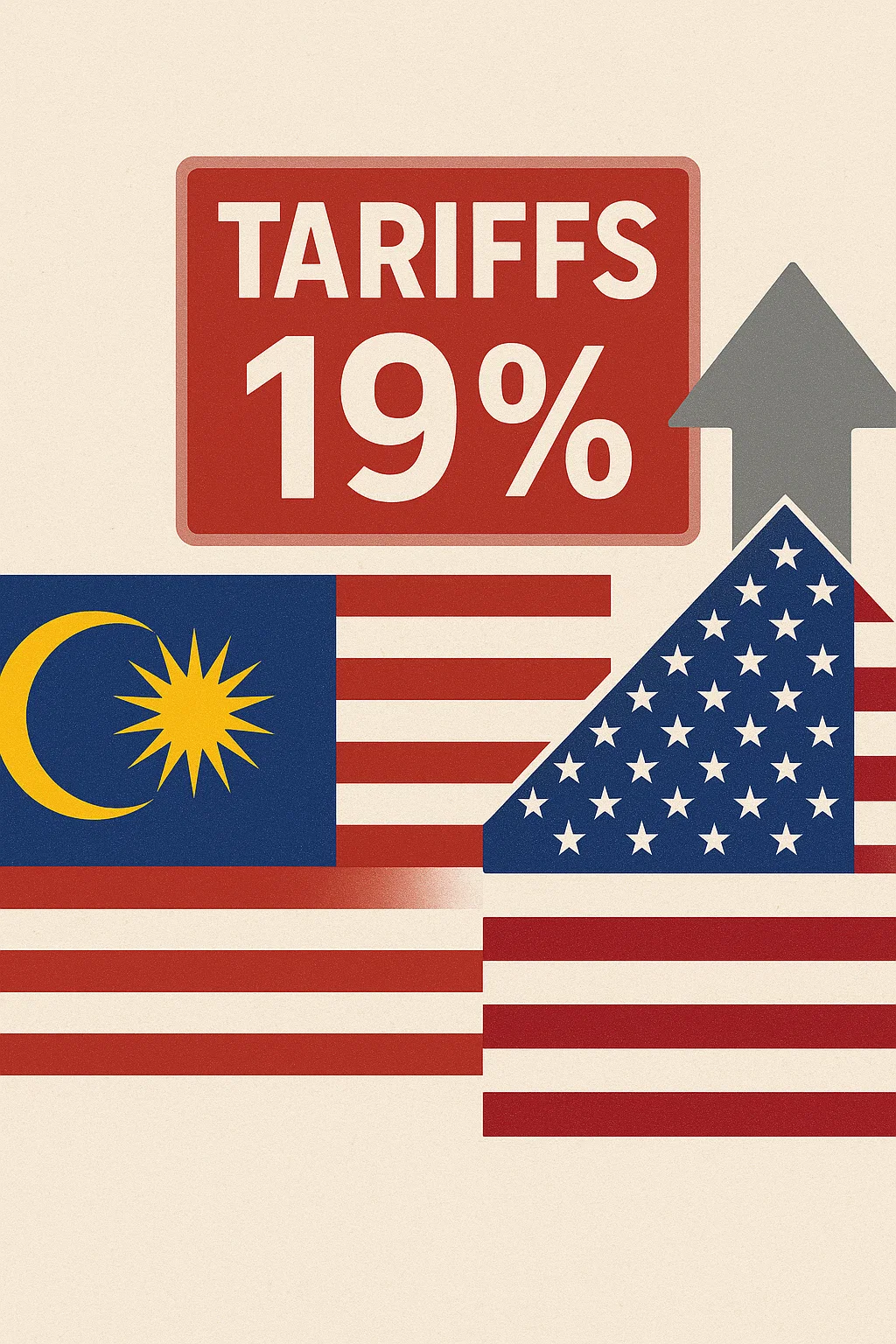19% US Tariff Hits: What Malaysian SME Exporters Must Fix This Week

19% US Tariff Hits: What Malaysian SME Exporters Must Fix This Week
As of 1 August 2025, virtually all Malaysian goods entering the United States now face a 19% ad valorem duty – down from the 25% “shock rate” threatened earlier this year. Pharmaceuticals and semiconductors remain duty-free, but glove-makers, palm-oil processors, furniture outfits and most other industries must absorb or pass on the new cost. The Ministry of Investment, Trade & Industry (MITI) expects the levy to be the “new baseline” and is urging companies to leverage Malaysia’s 18 free-trade agreements and accelerate efficiency upgrades.
Below are the three legal tasks you should complete before your next shipment – plus a heads-up on upcoming guidance for exporters already locked into fixed-price contracts.
1 | What exactly changed?
- Effective date: 1 Aug 2025 – shipments that arrive or are entered for consumption in the US on or after this date attract 19%.
- Coverage: All tariff lines except Malaysian pharmaceuticals and semiconductors, which stay at 0%.
- Legal basis:
- MITI Gazette U.(A) 245/2025 (reciprocal tariff schedule)
- US Federal Register Notice, Vol. 90, No. 149 (to be published 5 Aug 2025)
- Policy signal: MITI frames the deal as a win that preserves “red-line” sovereignty issues and aligns Malaysia with ASEAN peers.
2 | Three immediate customs must-dos
Tip: Record the additional duty as a distinct cost element in your ERP; it will be required if you later claim refunds under an FTA route.
3 | Fast FAQs for busy exporters
Q 1 – Does the 19% apply to goods that left Malaysia before 1 Aug 2025?
It depends. Duty is levied on the date of entry into the US, not the export date. Time-sensitive cargo on the water may still clear at the old rate if CBP processes the entry before midnight Eastern Time, 1 Aug 2025.
Q 2 – We ship glove components to a plant in Thailand, then re-export finished gloves to the US. Which tariff rate applies?
The Thai export is treated as Thai origin if the processing meets the substantial transformation test (19 CFR § 102.20). Otherwise, US Customs may “look through” to Malaysia and demand 19%.
Q 3 – Are there quick ways to avoid the duty legally?
Two paths:
- CPTPP or RCEP routing where rules of origin can be met;
- qualifying for the US “de minimis” USD 800 personal-use exemption. The latter rarely applies to commercial consignments and was rejected in a recent glove-maker case study we'll publish in Part 5.
Have a different question? Email us and we may feature it in a later instalment.
4 | Medium-term levers
MITI itself is urging SMEs to “make full use of Malaysia’s 18 FTAs to diversify and expand their export markets.” Over the next quarter:
1. Map FTA eligibility: List US customers who could accept goods re-routed via CPTPP partners (e.g., Canada, Mexico).
2. Automate HS/ROO checks: Integrate a rules-of-origin engine into your ERP to flag shipments that already meet a 0% FTA rate.
3. Scenario-model duty impact: Run a landed-cost differential for 19% vs. FTA-zero routes, net of additional logistics and compliance costs.
5 | What’s next? Existing contracts under fire
Coming up next: “Existing Contracts Under Fire – Renegotiation & Risk-sharing Tactics.” We’ll unpack force majeure, hardship and frustration provisions as contractually agreed and as under the Contracts Act 1950, INCOTERMS price-adjustment tools and a step-by-step renegotiation script for SMEs already locked into US supply commitments.
Stay tuned – or subscribe to our mailing list to get the article the moment it drops.
Further reading
- Legal–Strategic Tariffs Guide for Malaysian Exporters
- Better Tariff Management Among Malaysian Companies
Disclaimer
This publication is for general information only and does not constitute legal advice. Circumstances vary; exporters should seek specific counsel before acting.

.png)